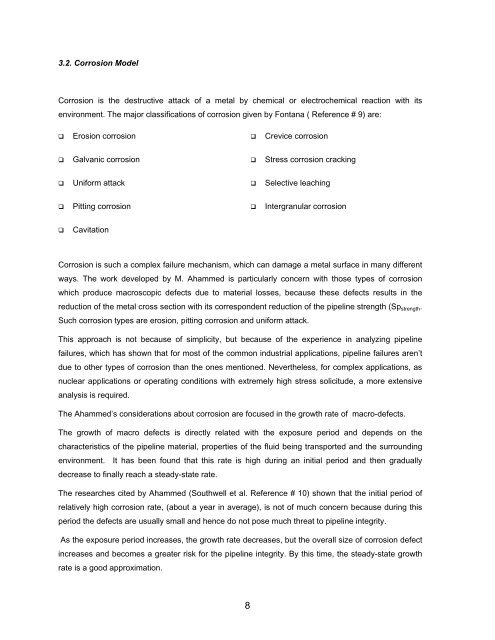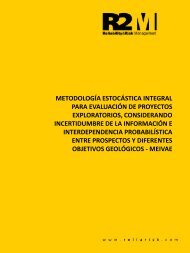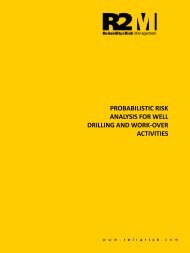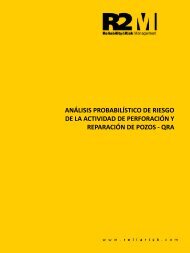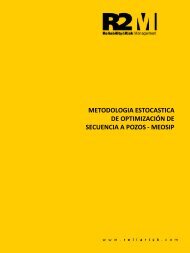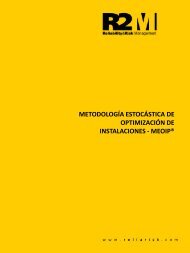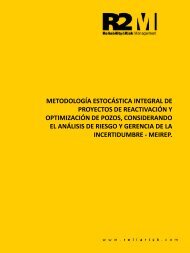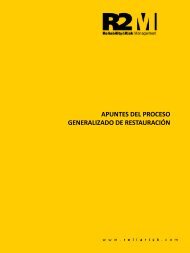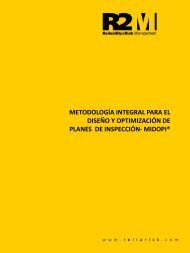Remaining Life of a Pipeline
Create successful ePaper yourself
Turn your PDF publications into a flip-book with our unique Google optimized e-Paper software.
3.2. Corrosion Model<br />
Corrosion is the destructive attack <strong>of</strong> a metal by chemical or electrochemical reaction with its<br />
environment. The major classifications <strong>of</strong> corrosion given by Fontana ( Reference # 9) are:<br />
<br />
Erosion corrosion<br />
<br />
Crevice corrosion<br />
<br />
Galvanic corrosion<br />
<br />
Stress corrosion cracking<br />
<br />
Uniform attack<br />
<br />
Selective leaching<br />
<br />
Pitting corrosion<br />
<br />
Intergranular corrosion<br />
<br />
Cavitation<br />
Corrosion is such a complex failure mechanism, which can damage a metal surface in many different<br />
ways. The work developed by M. Ahammed is particularly concern with those types <strong>of</strong> corrosion<br />
which produce macroscopic defects due to material losses, because these defects results in the<br />
reduction <strong>of</strong> the metal cross section with its correspondent reduction <strong>of</strong> the pipeline strength (Sp strength .<br />
Such corrosion types are erosion, pitting corrosion and uniform attack.<br />
This approach is not because <strong>of</strong> simplicity, but because <strong>of</strong> the experience in analyzing pipeline<br />
failures, which has shown that for most <strong>of</strong> the common industrial applications, pipeline failures aren’t<br />
due to other types <strong>of</strong> corrosion than the ones mentioned. Nevertheless, for complex applications, as<br />
nuclear applications or operating conditions with extremely high stress solicitude, a more extensive<br />
analysis is required.<br />
The Ahammed’s considerations about corrosion are focused in the growth rate <strong>of</strong> macro-defects.<br />
The growth <strong>of</strong> macro defects is directly related with the exposure period and depends on the<br />
characteristics <strong>of</strong> the pipeline material, properties <strong>of</strong> the fluid being transported and the surrounding<br />
environment. It has been found that this rate is high during an initial period and then gradually<br />
decrease to finally reach a steady-state rate.<br />
The researches cited by Ahammed (Southwell et al. Reference # 10) shown that the initial period <strong>of</strong><br />
relatively high corrosion rate, (about a year in average), is not <strong>of</strong> much concern because during this<br />
period the defects are usually small and hence do not pose much threat to pipeline integrity.<br />
As the exposure period increases, the growth rate decreases, but the overall size <strong>of</strong> corrosion defect<br />
increases and becomes a greater risk for the pipeline integrity. By this time, the steady-state growth<br />
rate is a good approximation.<br />
8


